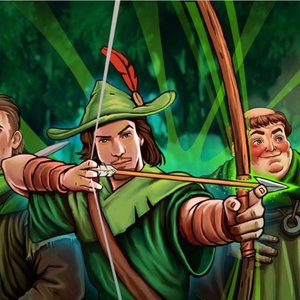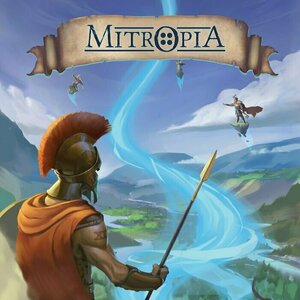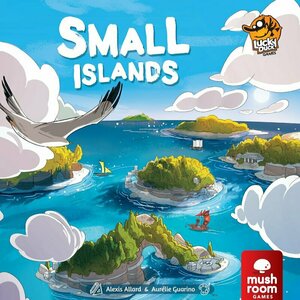Purple Phoenix Games (2266 KP) rated Robin Hood: Hero of the People in Tabletop Games
Jun 13, 2019
Disclaimer: This review is for a Kickstarter preview. We are not being paid for this preview, but we were sent the game from the designer. Components and rules may be changed before the product and project is finished. -T
As this game is not yet in full production, I will paraphrase the rulebook here for you so you can get an idea of how the game plays. Then I will give my opinions on this little card game.
Robin Hood: Hero of the People is a one-player card game that is played over three phases. To win the game you must have all Merry Men and Maid Marian recruited and active, while the bounty on your head is less than 500. You lose by seeing the bounty at or above 1,000 or by playing through the entire deck of Story Cards without winning. You may set the difficulty level by choosing how much you would like the bounty to start at before you begin play (100, 200, or 300). The rulebook instructs you how to setup the game using several piles of cards to create the play area. Deal yourself three Loot (skill) cards and the game is on!
The first phase of the game is Robbing from the Rich. During this phase you draw three (or more depending on other cards currently in play) Loot cards from the big deck. These cards consist of different skills to use later – like Archery, Strength, Swords, etc. You will also find Gold and Influence cards. These Loot cards are needed to recruit Maid Marian and all the Merry Men, as well as used for negating powerful negative Story Card effects in the third phase of the game. Once you have drawn your Loot cards, you may play up to three of them into your Inventory in front of you (unless a card instructs you otherwise). Only your cards in the Inventory will be used to recruit and rescue Merry Men, or be affected by Story Cards.
You have placed your skills and bargaining cards in the Inventory. It is now time to use them to recruit your Merry Men! The second phase is the Actions phase. You have several options of actions to take on your turn, but you may only take one action. One option is to recruit Merry Men characters. Each character card begins the game face-down in a grid. The card backs show the recruitment costs (paid in skills) for each. They all have different skill cost combinations on each back so you must choose your Inventory cards carefully in the first phase. During the game some characters may become jailed through the Story Cards. Also on the backs of the character cards are the costs to rescue your friends from jail, and the costs are different than the recruitment costs. This throws a wrench into your plans as you are trying to recruit and protect all your Merry Men, just to have them thrown in jail and made unavailable to you. Curse you, Sheriff of Nottingham!
Also during this phase, in addition to recruiting and rescuing your allies, you may purchase King Richard cards, Sherwood Forest cards, or decrease your bounty. King Richard cards are very very costly (requiring up to nine skills to purchase!) but also very powerful and very helpful to your cause. There are three of these in the game and when you have used one you must discard it out of the game. Do you have an abundance of skills and Loot cards to use? Would you like to protect your Merry Men from becoming jailed? Well during this phase you may also purchase Sherwood Forest cards to begin building a hideout. It costs two Strength skills, but once you have acquired all six Sherwood Forest cards, most of the Merry Men are protected from being jailed. Huzzah! The final option you have in this phase is spending any three Loot cards from your Inventory to reduce your bounty by 100.
The third and final phase is the Story Card phase. During setup you are instructed to separate this deck into two piles, shuffle them independently, and place the Story Cards in set one on top of the story cards in set two. Set one cards are annoyances that can bleed you of skill cards or raise the bounty on your head. Annoying! The cards in set two are far worse, as they will jail your unprotected Merry Men and set you back further from victory… also whilst raising your bounty. Super annoying!! Curse you again, Sheriff!!
If no win or lose conditions have been met at this time, you will return to the first phase with this additional rule: switch your active character (you start the game with Robin Hood) with another character you have recruited in the grid. Each character has a different special ability to be used on your next turn as well as a different set of skills printed on the face that you may use as discounts for recruitment, rescues, and purchasing of King Richard and Sherwood Forest cards. Example: Much the Miller shows 1x Sword and 1x Strength. You can use his skills as a discount to purchase a Sherwood Forest card by spending just one Strength card from your Inventory. Time to stick it to the Sheriff!
So how does it all shake down? Overall I say the game is really good. It is unfinished, and has not yet made it to Kickstarter, and I suspect that has something to do with any drawbacks I have experienced. Upon reading the provided rulebook and attempting Game 1, I had several rules questions. Rodney was quick to provide answers and it made the game so much more playable and enjoyable. Since it is a solo game only, every decision you make directly impacts how the game is played (duh, right?). There’s nobody else to mess with your plans, nor help them succeed. There’s no AI or ghost player. Just you versus the game. I have played this many times now on different difficulty levels and have won and lost on each. It would seem balanced, however…
There are a few strategies I attempted to use on my different plays to see how they might add to the complexity and change the results. I noticed that I won more when I completely ignored Sherwood Forest and King Richard’s cards. Yes, one of the King Richard cards reduces the bounty by quite a bit, and that’s just in one turn, but the cost is so mighty that I rarely found them enticing enough to pull the trigger. Same goes for Sherwood Forest. Though the cards cost a paltry two Strength, I found that I needed those Strength cards to recruit or rescue my Men and could not justify spending two per card (and six total cards to build the hideout) for that protection. Your play style may vary, and I am itching to play again to try new things out. Maybe I’m wrong about Sherwood Forest. I think that’s a really great trait for a game – to have its players thinking about different strategies while not playing, and just waiting for when they can play again.
I have to say, I am very excited to see this go to Kickstarter, and to learn what Rodney has in mind for improvements to the components, or rule tweaks, and the almighty stretch goals. I might be backing this one, even though I have a great working version of it now…

Sweet Baby Doll House Game
Lifestyle and Games
App
*** Create a beautiful princess castle for your baby dolls free of charge! *** ** If you are...
Purple Phoenix Games (2266 KP) rated Kim-Joy's Magic Bakery in Tabletop Games
Apr 8, 2022
Kim-Joy’s Magic Bakery is a cooperative hand management scenario-based card game for two to five players. In it, players are employees of the Magic Bakery and are tasked with baking wondrous items to satisfy a group of customers requesting their favourite (it’s British, I’m just doing my part) dishes. The game ends once all customers have been served or are otherwise no longer in the game. Depending on the current scenario, the group scores points based on how many customers they were able to serve. All players win together or they do not win.
Setup the Customers card deck according to the number of players, shuffle them, and deal out one or two (depending on number of players as well) face up to the table to begin the Customer Row. Do NOT shuffle the Layers cards. Instead, separate them by type and place them all face-up in decks by type. Do shuffle the yellow Ingredients cards and place out five face up (or face down depending on scenario) to form the Pantry Row. Each player draws a starting hand of three Ingredient cards from the deck, and the starting player takes the Kim-Joy standee to begin!
On a turn, the active player will have choices of actions to be taken, in any order they choose, from among the following: take an Ingredient card, pass a card to another player, bake a Layer, fulfill a Customer order, or refresh the Pantry. Depending on the number of players, each turn will consist of either two or three actions being taken. Most actions are self-explanatory, but I will give a quick hit to them all. The active player may see an interesting Ingredient card in the offer row and may simply draw it into their hand for an action. Once the player has enough Ingredients to bake a Layer (by discarding the requisite Ingredient cards) they may do so for an action. If the player has a card they believe another player could utilize, they may simply pass them that card as an action – either Ingredient or Layer. The goal of the game is help fulfill customer orders, so by using an action to fulfill an order, the player discards all the necessary cards and helps the group inch one step closer to victory. At a loss and need a suggestion for an action? Discard all cards from the Ingredient Row and draw new ones.
Once each player has completed their actions, the Customer Row is shifted one space to the right and a new Customer comes into the bakery. The bakery can only accommodate three customers, so if a new hungry Customer visits, they force out the Customer who has been there the longest, and the players lose the opportunity to serve that (possibly irate) Customer. Play continues in this fashion of players completing actions working toward satisfying as many Customers as possible until there are no more Customers in the deck nor in the bakery. Players then count the number of Customers they served, and score points according to the goals set by the scenario card! As the game typically takes 15-30 minutes, player usually request another try, so be prepared for that eventuality.
Components. This is simply a card game that includes an unnecessary, but cute, standee to mark the starting player. The cards are nice, and come in two sizes. Surprisingly, the cards sport a non-linen low-gloss finish (I’m just saying that many games nowadays are linen and as thick as possible) and feature whimsical and wonderful artwork. The game as a whole is very stylish and boasts a super fun theme. I have no issues with the components, artwork, or theme here. It all works together really well.
I will definitely suggest that new bakers player their first game without the added challenges of the scenarios. They throw in some extra complexity and difficulty that younger bakers just will not appreciate. The different scenarios are all very interesting and add in a little wrinkle to the game to make it just that much more intriguing. I have enjoyed all the different scenarios I have played, though I have not played all of them. In time, my dears. In time. Luckily, the designer has aptly seen it fit to include Helpful Duck cards that act as any Ingredient card needed at the time. These little cuties are God-sends in certain situations, and can also be included in more numbers to make scenarios easier to complete.
Being big fans of the show, I knew my wife and I would love this one. It is cute, challenging, but doesn’t try to be much more than what it is. With so many games out there competing to be bigger, more complex, and more aggressive, it is so nice to settle down with a light and jolly little card game like Kim-Joy’s Magic Bakery. I feel like I am working in a bakery while I’m playing – orders are coming in too quickly and I need just one or two more actions each turn to gather ingredients and bake new layers. It’s a really great theme and a really great game regardless of theme. The weight is perfect for young and older players, and good cooperative games that are not susceptible to quarterbacking are sometimes hard to find. Purple Phoenix Games gives this one a quite scrumptious 10 / 12. I wonder if Kim-Joy herself plays this game. If so, I officially challenge her to play with my wife and I… and maybe show us a couple tricks in the actual bakery as well. I could go for a killer Chocolate Bombe, Millionaire’s Shortbread, or a vegetarian Old Fashioned Trifle! And if you get THAT joke, my brother will love you.
Purple Phoenix Games (2266 KP) rated Mitropia in Tabletop Games
Apr 21, 2020
Mitropia is an area majority game that can end in several fashions. To setup your first game, please use the setup instructions in the rule book to form the playing area. However, the more you play, the more you might like to change it up and try out some wacky board formations. Every player receives a player mat featuring a tribe with different special abilities. They will each also receive the matching colored warrior tokens (and bag if present), cards from the two decks according to the setup in the rules. Each player will place their chieftan (two stacked warrior tokens) on the board. The game is ready to be played!
DISCLAIMER: We were provided a near-retail prototype copy of this game for the purposes of this review. These are preview copy components, and I know the final components will be a little different from these shown (upgrades!). Also, it is not my intention to detail every rule in the game – and the rules will certainly be tweaked from this version and the rules we used to play it. You are invited to download the rulebook from the publisher’s website, back the game through the Kickstarter campaign running April 16 – May 17, 2020, purchase it from your FLGS, or through any retailers stocking it after fulfillment. -T
Game play is relatively simple. Players are attempting to score points by occupying and/or surrounding terrain tiles. Some tiles are worth more points than others depending on tribe abilities and other factors. The game ends once there are no more legal plays, all players have passed, or a chieftan has been captured by an opponent. Points are then tallied and a victor is determined.
On a turn, a player will make a “move,” which is a strange term as the player is actually placing out a warrior token. The placement of the warrior is dependent upon a move pattern card that is showing on the player mat, or one from the player’s hand to be discarded. These move cards show where the warrior can be placed (like Onitama‘s movement cards). Move cards can be combined with special action cards to make interesting warrior placement upon the board. Again, the goal of the game is to encompass as much terrain as possible, and surround your opponents to capture their warrior tokens.
In addition to simply placing out new warriors to claim lands and surround opponents, using terrain types to their fullest is a strategy not to be ignored. Wormholes are teleport locations, and mountains are impassable. Using just these features can wreak havoc on unsuspecting opponents. Mountains can especially be brutal when being used as an obstacle to facilitate surrounding enemies. When you play Mitropia be warned: mind the mountains.
Play continues in turns until a win condition or game end condition has been met. The players tally points to declare a victor, and then setup to play again for the player will definitely want to play another.
Components. Again, this is a near-retail prototype copy, so the components are very close to what will be available and in each box upon a successful Kickstarter campaign. That said, these components are amazing! I told the publisher the day after receiving the game that I was very impressed with what was packed in the box. Now, I haven’t been able to Tetris the components back in the box and have the cover fit flush since I opened it, but what is inside the box truly is wonderful. The player discs are all nicely-painted wood bits. The player mats, cards, and terrain tiles are all great quality. The art on everything is super stellar, and I just love playing with everything! You know the feeling when you’re playing a game that just has that perfect tactile quality? That’s Mitropia. And this copy isn’t even upgraded!
So here are my thoughts on this beast. I have never played Go, and I’m not really sure I want to after having Mitropia in my hands. I probably will play Go sometime, but I can only picture myself wishing I had been playing Mitropia. There is just something about having special abilities and slight differences that really improves my enjoyment. I love being able to see my turns several rounds in advance, but then having to switch tactics because an opponent has thwarted my evil plan at the last moment. I love being able to sit and think about my plays. I do not suffer from analysis paralysis, and this is a caveat I have for the game – do NOT play with AP-prone opponents. There is a lot going on here and so many options on a turn. AP sufferers can just stare at the board frightened of playing the wrong move or deciding whether or not to play a special ability card. However, I think this is a fantastic game with an excellent theme overlaid. If you are looking for a thematic game of Go that looks beautiful, is colorful instead of boring, allows players to have special powers and abilities, card play similar to the award-winning Onitama, then you certainly owe it to yourself to give a look at Mitropia. Please head over to the Kickstarter campaign that ends May 17, 2020 and check it out to learn even more and see what others are saying about it. I will be guarding my copy like you wouldn’t believe.
Purple Phoenix Games (2266 KP) rated Pocket Paragons in Tabletop Games
Sep 25, 2020
Pocket Paragons is a two player dueling card game where the winner is the player to knock out their opponent’s character(s). This game employs a lot of card play with minimal amounts of cards and tremendous amounts of double-think and flat out guessing as to what your opponent might be thinking.
DISCLAIMER: We were provided a copy of this game for the purposes of this review. These are prototype media set components, and all complete copies will have extra components including these shown. Also, it is not my intention to detail every rule in the game, but to give our readers an idea of how the game plays. You are invited to back it on Kickstarter, order from your FLGS, or purchase through any retailers stocking it after it is released. -T
To setup a game of Pocket Paragons, players will choose one character (or three in a Tournament Mode), all associated cards, and an HP/Energy dial (I am using dice for my game). Players will display in front of them their character’s main Character card as well as the Ultimate card. All other cards related to their character will begin the game in hand and will be ready to be played immediately.
A game of Pocket Paragons could range from one card played to several rounds and upwards of 10 minutes. Tournament play can be longer still. For this preview I will be describing game play for single games.
On a turn each player will choose one of the cards in hand to be played, lay it face-down on the table, and flip it once both players are ready. When the cards are flipped, the players will compare and check for Counters. Each card may counter other card types and will have text stating so (Example: the Malice card from above shows that it counters Agility cards). If a player can play a card to counter their opponent’s card then the countering player sends the opponent’s card back to their hand and will gain one Energy. If the card played had damage printed on it, the countered player will reduce their HP by the printed damage amount. However, if no cards were countered, then both cards will activate and assign any damage. The next round may now begin with players choosing cards to be played one by one until a player is knocked out of the game.
After a card is played and used the player will be discarding into a discard pile. The only way to regain these cards into hand is by playing a rest card (yellow sun). Using the rest cards at just the right time will certainly reflect the strategy of the player. Players may use a rest card at any time, but some red Weapon cards can immediately Execute an opponent if played while they are resting (think coup de grace in RPGs). Therefore, while waiting until all cards in hand are used before playing a rest card makes logical sense, smart players may be saving their Execute cards for that exact instance.
Components. Again, this is a prototype copy that cobbles six characters from multiple sets to create the Media Set we were sent. We have been informed that retail (or Kickstarter) boxes will contain six related characters and dials to track HP and Energy. The cards we were sent are of okay quality, and I do not believe this is the stock that will be used on the final game. The art and art style on the game is quite nice. Icons and placement are logical, and cards are easy to read and understand. The artwork is very colorful and one thing I VERY MUCH appreciate on this (because I almost was lost after taking the messy components shot below) is that each card belonging to specific characters show the same artwork in fade in the background. I had a hot flash (weird for a guy right?) when I was sorting the deck back together after playing it and not knowing exactly which cards belonged with which characters. So, thanks for that Solis Game Studio!
I truly enjoyed my plays of Pocket Paragons. The games are super quick, but certainly test your ability to out-think your opponent and try to guess when they might be using their rest card so you can bust out the Execute. And each character plays so differently from others that it’s truly a joy to try out each and every character you can to see which one resonates with your style of play. The art is fabulous with bright colors (a definite plus for me), and the learning curve is nice and smooth – anyone can play this in about three to five minutes of learning. If your collection is screaming for a super quick card game that can be played in under 10 minutes and you can get some brain cells moving around, then Pocket Paragons is for you. It’s certainly for me and my collection. I love everything about it and can see myself diving down the rabbit hole once more and more IPs are released. Oh boy, this is gonna hurt the wallet…
Back it on Kickstarter launching October 6, 2020!
Purple Phoenix Games (2266 KP) rated Small Islands in Tabletop Games
Oct 13, 2021
Small Islands is a tile placement exploration game for one to four players. In it, players are explorers tasked with discovering resource-rich new islands upon which their clans may either exploit or inhabit. However, it’s each clan for themselves, and the players all need those precious resources. In the solo game, the player’s AI opponent is Alexis Allard, designer of the game. He has goal cards to be used and finishing point totals that the solo player will be attempting to beat during the course of the game.
DISCLAIMER: We were provided a copy of this game for the purposes of this review. This is a retail copy of the game, so what you see in these photos is exactly what would be received in your box. I do not intend to cover every single rule included in the rulebook, but will describe the overall game flow and major rule set so that our readers may get a sense of how the game plays. For more in depth rules, you may purchase a copy online or from your FLGS. -T
To setup, the player claims their player color and assigns Alexis with his color. They take all the components for each player and places them on the table. The starting tiles (that feature flying seagulls) are placed on the table in any orientation that is legal for play: islands need to connect, and seas need to flow from one tile to the next, as seen below. The Landscape tiles are to be shuffled and placed within reach. The four ship tiles are displayed, with all ships on their gray side, save for the solo player’s chosen color. The Navigation tile is placed below the ship tiles, and the beginning three Landscape tiles are placed in a row beside it. The small stack of Objective cards are shuffled and placed nearby, with the player drawing one to begin. They also draw two Landscape to start. For solo play, one Alexis difficulty card is chosen, and his deck of Explore and Land cards is built accordingly. The Prestige (VP) tokens are (apparently when I play) just thrown on the table and gathered in a loose pile. The game may now begin!
Small Islands is played over four rounds, with several turns being played per round. The solo player begins each round with their turn. A turn is divided into three phases: Preparation, Exploration, Reward. The Preparation phase has the player populating the Navigation Tile with six Landscape tiles face-down as a draw stack. The player then draws two Objective cards to add to their one they are currently holding. From these three cards the player will choose one to become their current objective for the round, one to be saved for a future round, and one to be discarded back to the stack. These Objective cards provide a strategy to guide the player through the current round, and also setup future rounds for scoring purposes. Upon them are icons that will award the player with points for scoring islands containing specific combinations of resources.
During the Exploration phase in the solo game, the player takes their turn first, and then Alexis will take his. A typical Exploration phase has a player deciding if they will Explore a tile or Land a ship. To Explore a tile, the player chooses one of the face-up Landscape tiles from the market/offer row and, along with their two held tiles, choose one to add to the play area. These tiles may be rotated in any fashion, as long as they can be legally placed: island edges are to be extended, sea spaces connected, et al. It is also at this time the player may place one of their Bonus Tokens upon any tile on the play area. These Bonus Tokens are resource icons that cover up existing icons on a tile, or directly over another Bonus Token. A player would do this in order to affect the balance of icons on a given island for scoring purposes.
Should the Navigation tile be empty of Landscape tiles and the player wish, they may instead Land a ship, thus ending the Exploration phase. The player chooses any of the ship tiles, and places it legally on the play area (in a sea space, as shown below). Once the player ends the phase, the game progresses to the Reward phase.
After the player takes their turn during the Exploration phase, Alexis takes his turn. This is done by drawing an Expedition card from his stack and following its instructions. The Expedition card will show whether Alexis would like to Explore or Land, which Landscape tile he would like to draw, and where he would like to place it – in relation to where the last player tile was placed.
During the Reward phase, the player will place any of their clan houseeples they wish on any island upon which they have not placed a houseeple previously. Then, consulting their Objective card, score points for successfully satisfying the card’s requirements. For Alexis, the player will draw a new Expedition card from Alexis’s stack, note the icons present on the Mission area of the card, and place Alexis houseeples upon islands that satisfy its requirements.
The game continues in this fashion until the fourth round is complete. The player totals their Prestige points (VP) and if they score more than Alexis, they win! The player must then take a picture of their archipelago they built and send it to the designer directly and gloat to them about their massive victory. Or simply rest in the satisfaction of having played the game well. Whichever.
Components. This game has a lot of components, and they are mostly cardboard and houseeples. The cardstock and board are good quality, as I have come to expect from Lucky Duck Games, and the houseeples are all different shapes for each clan color. I find that a nice and unnecessary, but very cool, touch. The art in this one is simply amazing. I mean, look at these photos! Everything from the color scheme to the art style all mesh well and give a well-considered polish to a great theme.
Okay, I won’t even hide it – I LOOOOOOVE this game. I never really liked Carcassonne very much, but Small Islands gives a similar feel, but executes everything so much better. Even with the solo rules. There are so many options available at any one time, and having a random Alexis game each time you play is just so satisfying. I feel like I could keep this game forever and not play the same game twice. Ever. And I think that I would WANT to play this one forever. Yes, I think this is a solid fit for my collection indeed, and I can see it working for so many different gamer types.
Having Alexis constantly applying the pressure to maximize and strategize every turn is delicious, and having almost zero conflict with him as we both explore is welcome. You know when you start the game how many points Alexis will score at the end of the game, so having that knowledge really makes you consider all the options available. It just works on so many levels.
If you are looking for a light-hearted, but with some great decisions to be made, then I strongly urge you to check out Small Islands. I knew immediately that this was a game for me. It’s on the lighter side without being too simple, I get to build a thing and admire it at the end of the game, and I have an opponent who just wants to see me win because he designed the game! I’m in and out in less than an hour and feel content that I was able to have a great experience with a well-designed game. I cannot wait to introduce this to all my friends and family gamers so they can fall in love with it as well.
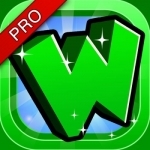
Word Chums
Games and Entertainment
App
More fun than Words With Friends and more addicting than Scrabble, WORD CHUMS: the highest rated...

Lola's ABC Party FREE - Learn to Read
Education and Games
App
Lola’s ABC Party FREE teaches letters for children ages 3-6. This free version of Lola's ABC Party...
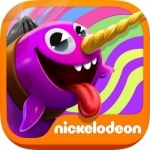
Sky Whale - a Game Shakers App
Games
App
Bounce through the sky collecting donuts to keep your narwhal up in the air! Use clouds and crazy...
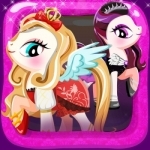
My High Pony Magic Creator- Dress Up Game for Free
Games and Entertainment
App
Rumor has it in the city that the annual cute pony contest will be next week. You quickly check on...
